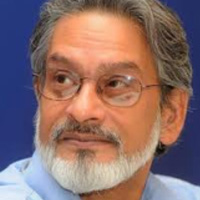The Indian economy, one of the fastest growing economies in the world over the last three decades, today shows telltale signs of an economic slowdown. In this four-part series, Ashok Kotwal and Pronab Sen first give their perspective on the genesis of the present problems and at the end suggest a possible way forward.
In the first part, Ashok Kotwal and Pronab Sen highlight the ‘dual economy’ structure of the Indian economy comprising two very different but highly interdependent sectors – urban and rural. They then describe the generic process of developmental transformation in a dual economy that became the template for development in East and Southeast Asia.
This piece was written for The India Forum by I4I Editors Ashok Kotwal and Pronab Sen: https://www.
The Indian economy has had the distinction of being one of the fastest growing in the world over the last three decades. Yet, today there is a sense of economic malaise in the air. The young are feeling frustrated as there are too few good jobs on the horizon for them. Rural areas are in distress as farm incomes have stagnated. Corporate investment has declined. Banks burdened with bad loans are finding it difficult to lend. Exports have declined. There are telltale signs of the onset of a further slowdown.
The government is also showing signs of panic. Soon after witnessing the unease in the corporate sector after her budget speech in July 2019, the Finance Minister has been holding consultations with business leaders to assuage their displeasure. The tax surcharge on income of over Rs. 20 million on capital gains of individual and institutional investors (domestic and foreign) has been removed; only that on salaries and rent received by individuals remains. Several other measures have been announced: merger of some public sector banks, recapitalisation of banks, loan melas, and moratorium on repayment of micro, small and medium enterprise (MSME) loans. All of these except the last are supply-side measures and are likely to have little impact on stimulating demand anytime soon.
The measure that has received the most media attention is the corporate tax cut. In the third week of September came the announcement that corporate tax rate would be cut from 30% to 22% for firms that do not seek any exemptions, and from 35% to 25% for those who do. For manufacturing firms the tax rate would be as low as 15% for those making investments after October 2019. The news was welcomed by the corporate sector and boosted the Sensex index on the day of the announcement by as much as 4.5%.
How did such a state of affairs come to pass in this fast-growing country? Will these corrective measures taken by the government arrest the slowdown? If they do not, what would? This series is an attempt to answer these questions by examining the genesis of the present problems, and then asking what should be the way forward. The goal is to put together a plausible and coherent story.
Development in a dual economy
Before we start putting together an explanation for the present state of affairs, we should understand the structure of the Indian economy.
Let us start by defining the terms ‘formal’ and ‘informal’. The ‘formal’ sector consists of all the registered firms (that is, firms employing 10 or more employees) plus the government sector. The ‘informal’ sector consists of the rest. Typically, formal sector jobs are better jobs in which the workers get some basic benefits like provident fund and pensions etc., whereas the informal sector workers do not. Agriculture – the sector that employees the largest part of Indian labour force (over 40%) – is informal. Much of the rural economy is informal, and so is a part of urban economy. Eighty per cent of India’s population makes their living in the informal sector and produces half of India’s GDP (gross domestic product). Almost all the poor toil in the informal sector.
Consider India as a dual economy made up of two free trading regions – ‘urban’ and ‘rural’. Urban is more developed and hence the average incomes are higher there. This is so because typically urban growth is based on productivity growth in the formal sector while rural growth is based much more on productivity growth in the informal sector (agriculture).
Typically, labour productivity, and also the potential for productivity growth tends to be higher in formal sectors like industry than in an informal sector like small-scale agriculture. Faster industrial growth would allow agricultural labour to move to higher productivity jobs in industry, and this can be a significant contributor to the overall growth propelled by productivity growth in each sector.
When there are fewer farmers left tilling the same amount of land, they too see an increase in their incomes. There can be a further increase in agricultural incomes through productivity gains in agriculture. When rural incomes rise, they also result in an increased demand for industrial goods thus producing a virtuous cycle of growth. This is what happened in successful Asian countries. Not only did they grow fast, but they also managed to drastically reduce poverty in a generation.
All developed countries have gone through this process. Even large agricultural exporting countries like the US, Canada, Australia have a miniscule percentage of their labour living off agriculture now.
The two oft repeated questions: ‘Why is the economy not creating enough good jobs?’, and ‘Why is there such rural distress?’ have a common answer. India has not succeeded in producing enough high productivity jobs to draw labour away from agriculture. Of course, there are further reasons for the present distress in rural areas, demonetisation being an important one. We will discuss these later.
If developed countries underwent this process and so did many other Asian countries, why is India taking so long to do this? To understand this let us first understand the strategy employed by the successful Asian countries in the next part of this series.
The second part of this series will be posted on Saturday, 28 September 2019.
The analysis and arguments in this series have benefited from discussions in recent times that both authors have had with a large number of individuals, far more than can be named here. Our thanks to all of them.
Ashok Kotwal would like to thank Parikshit Ghosh, Ashwini Kulkarni, Milind Murugkar, and Bharat Ramaswami for many useful conversations.
I4I is now on Telegram. Please click here (@Ideas4India) to subscribe to our channel for quick updates on our content.
Notes:
- In the just-released book of essays on post-Covid economic policy, Baru (2021), there is a surprising commonality among economists of various stripes and ideologies on the need to boost aggregate demand by fiscal measures and to protect jobs and livelihoods.
- Even the IMF has changed its policy stance now.




 27 September, 2019
27 September, 2019 





Comments will be held for moderation. Your contact information will not be made public.